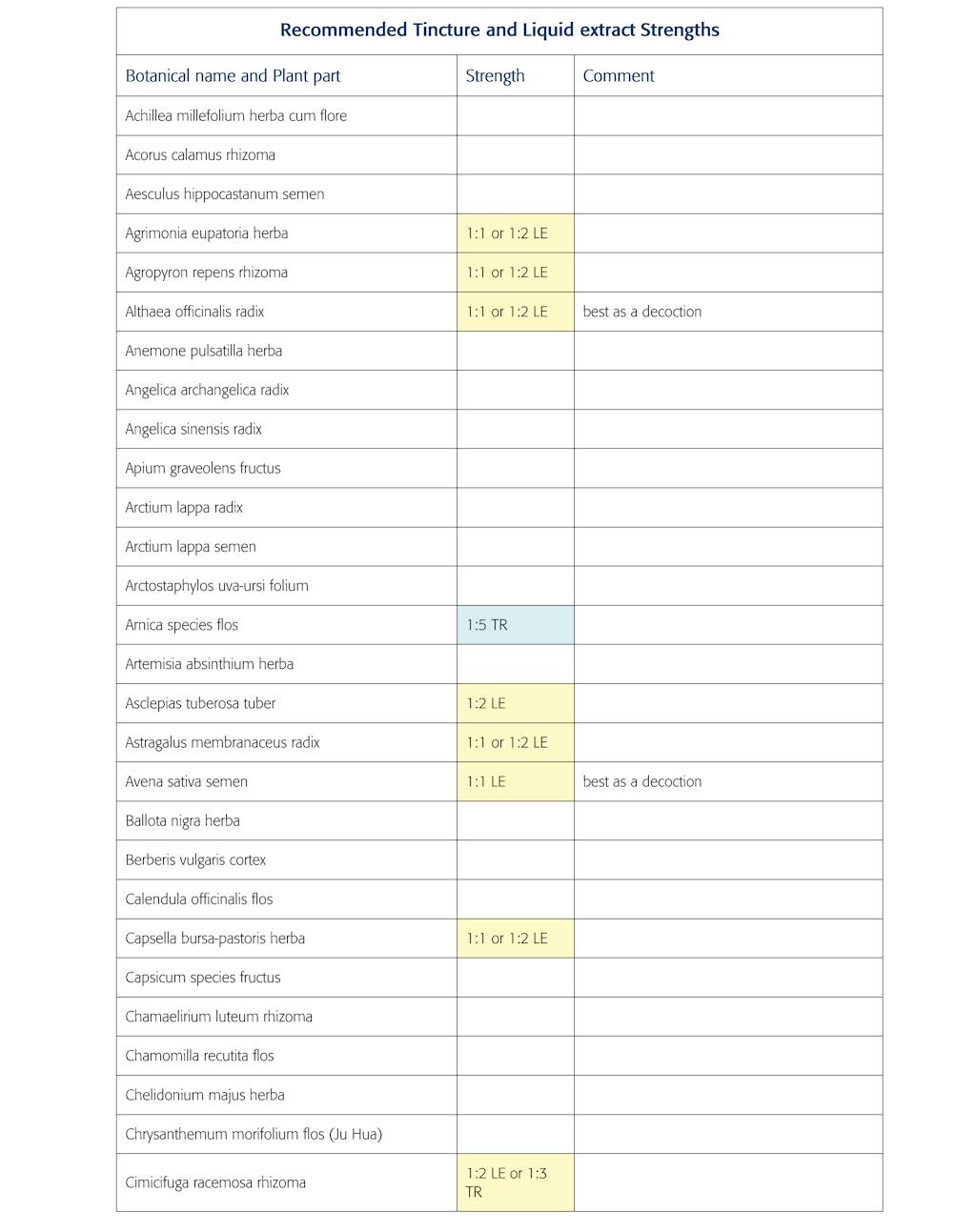Lesson 6: Recommended strengths for tinctures and liquid extracts
Based both on the failure of some 1:5 tinctures in practice, and in many trials in my seminars, it has been found that 1:3 tinctures are much more effective for most herbs. For some weaker herbs, 1:2 or 1:1 liquid extracts are preferred to 1:3 tinctures: see below.
The following table describes the three main herb strengths. TR = tincture and LE = liquid extract.
Note: Liquid extract (LE) is here used as equivalent to fluid extract (FE).
Herb strengths
Herbs can be approximately divided into three groups according to relative strength, and are color-coded as shown in the table.

If the individual remedy is more effective as an infusion or decoction of the dried crude drug than a tincture (TR) or liquid extract (LE), there is a note in the Comment column of the following table. It does not necessarily mean that the remedy is ineffective as as a tincture or liquid extract, it just means that an infusion or decoction is likely to be more effective.
Recommended herb strengths Table
The strengths shown in the Table below are those that I recommend on the basis of clinical experience and study of the research on this topic.
The practitioner may prefer to use different strengths, or the local pharmacist or herb supplier may not have the recommended strengths available. However, if the recommended strengths are changed, then the practitioner will need to change the recommended dose for the single herb or herb combination.
Herb strength and color-code All herbs shown in the Table are average dose herbs unless color coded otherwise, and their tincture strength is 1:3, unless otherwise stated.


